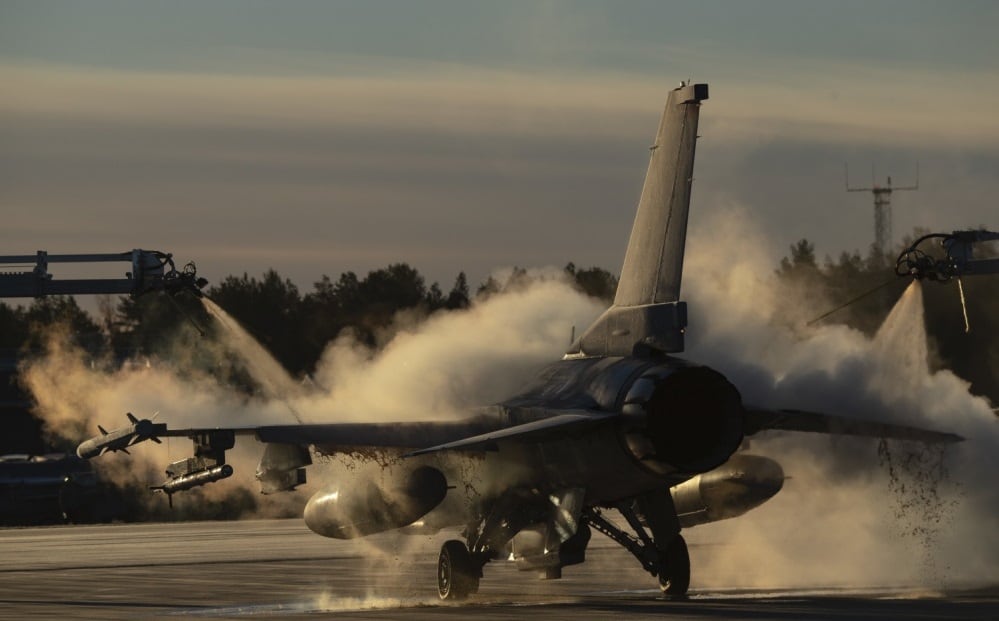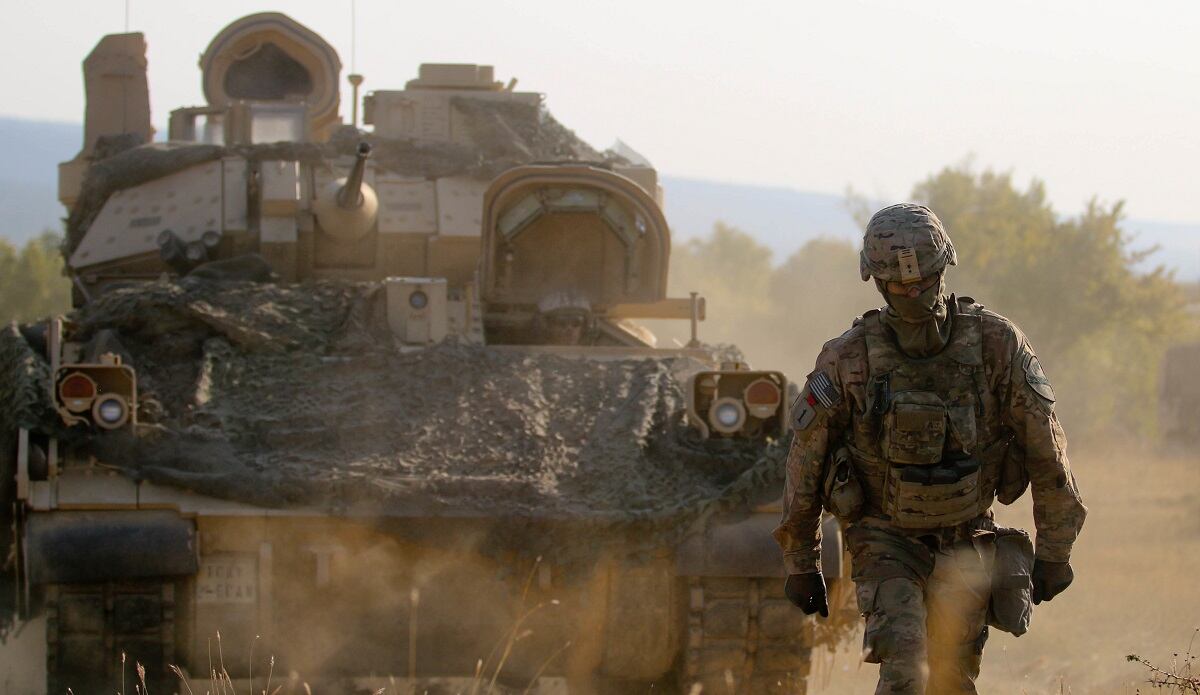Russia is positioned to quickly defeat forward-deployed U.S. and NATO forces and grab land before reinforcements could arrive, according to a new paper from the Atlantic Council, an international affairs think tank.
In the Dec. 13 paper, “Permanent Deterrence: Enhancements to the U.S. Military Presence in North Central Europe,” former NATO Supreme Allied Commander and retired Air Force Gen. Philip Breedlove and former Deputy Secretary General Alexander Vershbow propose “a carefully calibrated mix of permanent and rotational deployments in Poland and the wider region" to deter Russia and reinforce the alliance.
Breedlove and Vershbow warn that Russian President Vladimir Putin is pushing to roll back the post-Cold War, rules-based order that has ensured European security since World War II. They point to Russia’s invasion and continued occupation of parts of Georgia and Ukraine, military buildup in its Western Military District and Kaliningrad, and “hybrid” warfare, which includes the use of disinformation through social media, against Western societies to heighten instability.
The Pentagon is also shifting to prepare for a return to so-called “great power competition,” and is adjusting the services to prepare for a potential conflict with a major nation such as Russia or China.
The U.S. and NATO have taken steps since 2014 to respond to and deter Russian provocations, the authors acknowledge. The U.S. is rotating an armored brigade combat team to Europe every nine months and prepositioning equipment for a second team that would deploy from the U.S. in a crisis.
NATO is deploying four multinational battle groups of about 1,200 troops to each of the Baltic states and Poland through the enhanced Forward Presence initiative. This “deterrence by trip wire," agreed upon at the 2016 Warsaw Summit, is intended to show Russia that any aggression would be met by alliance forces alongside local forces.
RELATED

But those battle groups and the U.S. brigade combat team lack a comprehensive and coordinated battle plan, and necessary enablers such as intelligence, surveillance and reconnaissance, air and missile defense, and long-range fire such as artillery. And this leaves them vulnerable.
“A determined Russian conventional attack, especially if mounted with little warning, could defeat these forward-deployed NATO and U.S. forces in a relatively short period of time, before reinforcements could be brought to bear,” the paper said. “Concerns have grown that a quick Russian land grab might present the Alliance with a fait accompli, dividing the Alliance and paralyzing decision-making before reinforcements could arrive.”
Many of the enhancements Breedlove and Vershbow recommend would bolster the U.S. presence in Poland, which is a key staging area for most NATO efforts to defend the Baltics. And it would make some elements of the U.S. deployment to Poland permanent.
The paper recommends upgrading the U.S. Mission Command Element in Poznan, Poland, to a U.S. division headquarters. It would be a permanent deployment without dependents, and would be the hub for rapidly flowing U.S. reinforcements from Europe and the U.S. to Poland and the Baltic States in a crisis. The U.S. should also enlarge the runway at Powidz, build up railheads to offload equipment, build a site to preposition a brigade set by 2023, create new fuel storage sites and build new ammunition storage sites.
The U.S. Air Force also needs to bolster its presence in Poland, the paper said. The U.S. aviation detachment at Lask Air Base there, which has aircraft such as F-16s, should be enlarged and made permanent to better rotate fighter and cargo aircraft through and support deployments from other allies' air forces, they said. It should make the U.S. detachment at Miroslawiec Air Base in Poland permanent to better support its MQ-9 Reapers, which quietly started flying there in May.
The Army should establish a new headquarters for one combat aviation brigade in Poland to support training missions throughout the region, they said.
The U.S. Navy should home port destroyers in Denmark, with continuous patrols in the Baltic Sea as well as port visits to allied ports in the region. It addition to presence patrols — missions should possibly include anti-submarine, maritime domain awareness, amphibious operations and counter-anti-access/area denial. The U.S. should also set up a small naval detachment in Gdynia, Poland, to make it easier for the Navy to frequently visit Poland and other ports in the Baltic Sea, the authors write.
But the U.S. shouldn’t foot the entire bill for this effort, they note. Poland’s offer of $2 billion earlier this year to support a permanent U.S. base there is “a good starting point” and could be used to build more permanent facilities for the U.S. brigade combat teams' rotations and upgrade training facilities. But the final bill will probably end up exceeding $2 billion.
And NATO’s supreme allied commander should draw up plans to transfer authority over U.S. European Command forces in Poland to NATO command, if an attack on a NATO nation were to erupt that would activate the Article 5 agreement of collective defense.
Breedlove and Vershbow stressed that the deployment changes would not exceed the agreements on what constitutes “substantial combat forces” in the NATO-Russia Founding Act of 1997, which sought to reassure Russia that NATO enlargement would not present a military threat to Russia. Even though a division headquarters would be located in Poland under this plan, the division itself would not be deployed there, the paper said, and the deployment would remain a reinforced brigade with some enablers.
Stephen Losey is the air warfare reporter for Defense News. He previously covered leadership and personnel issues at Air Force Times, and the Pentagon, special operations and air warfare at Military.com. He has traveled to the Middle East to cover U.S. Air Force operations.





